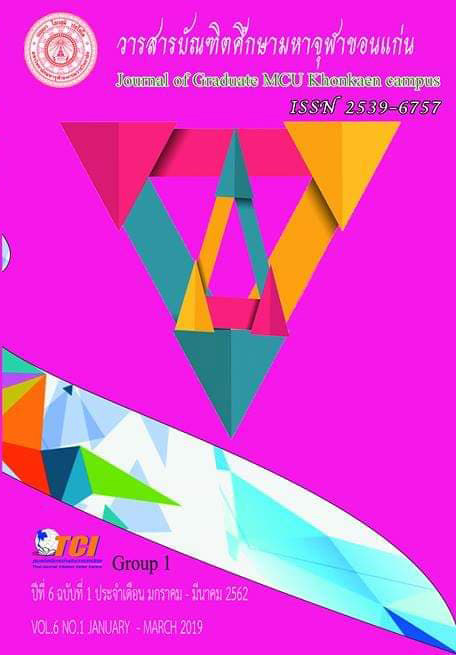The Causal Relationship Model of Factors Affecting OperationalEffectiveness of Internal Quality Assurance in Private Schools in the Northeastof Thailand
Main Article Content
Abstract
The objectives of this research were: 1) to examine the consistency of the causal model of operational effectiveness of internal quality assurance in
private schools in the Northeast of Thailand and 2) to investigate the causal relationship model of factors affecting operational effectiveness of internal
quality assurance in private schools in the Northeast of Thailand.
The research sample selected by multi-stage random sampling consisted of 404 administrators. The instrement to collect data was a 5-level rating scale questionnaire to analyze mean, standard deviation. Pearson’s product moment correlation coefficient at 0.974 in confirmatory factor analysis and test the consistency of the hypothetical model and empirical data.
The research findings were as follows:
1. The model of the factors of operational effectiveness of internal quality assurance in private schools in the Northeast of Thailand was valid and
consistent with the empirical data. The model indicated the Chi-square consistency was 136.89, df = 113, p = 0.062, GFI = 0.97, AGFI =0.94, RMSEA=0.005, SRMR=0.021, CN= 433.69 316 Journal of Graduate MCU KhonKaenCampus
2. The factors affecting internal quality assurance in private schools in the Northeast of Thailand consisted of: 1) three factors of direct effect: teacher leadership, organizational culture, and personal participation, 2) three indirect factors: teacher leadership, organization culture, and organizational commitment, and 3) five total factors: teacher leadership, organizational culture, organizational commitment, personal participation, and principle leadership.
The model accounted for 82% of factors affecting operational effectiveness of internal quality assurance in private schools in the Northeast of Thailand.
internal quality assurance in private schools in the Northeast of Thailand.
Article Details
References
Model of Internal Quality Assurance in Basic Education School.
Journal of Educational Measurement Mahasarakham University,
18(2), 225-236.
Channarong Pornrungroj. (2014) . Cross the Limit to the Millennium of
Quality. Bangkok : The Office of Standards and Quality Assessment
(Public Organization).
Chusak Phetkrajang. (2016). Ethical Transformational Leadership,
Organizational Culture, Learning Organization and School
Effectiveness Affiliated With the Primary Educational Service
Area Office in Nakhonsawan Province : Path Analysis. Journal of
the Association of Researchers, 20(3), 62-74.
Jenjob Harnklab1 & Supathra Urwongse. (2016). Factors Affecting Success
in the implementation of Internal Quality Assurance of Private
Schools in Bangkok. Journal of Education, 17(2), 123-134.
Mackenzie S. et al. (2017). Teacher Leadership Report: How Student-Led
Pedagogy in Modern Learning Environments (MLEs) Can Improve
Literacy Learning. Journal of Educational Leadership, Policy and
Practice, 32(1/2), 62.
Office of the Education Council. (2004) Educational Conference, Jaroenpol
press. Bangkok
Office of the Private Education Commission. (2013). Strategic Plan of the
Private Education Commission : 2013-2017. Bangkok.
Phoom Praraksa, SomkidSroinam, Muntana Inthusamith & Manit
Pawarinyanon. (2015). Model of Factors Influencing Internal
Quality Assurance Operational Effectiveness of the Small-sized
Primary Schools in the Northeast. Journal of Education khonkaen
university, 9(4), 128.

